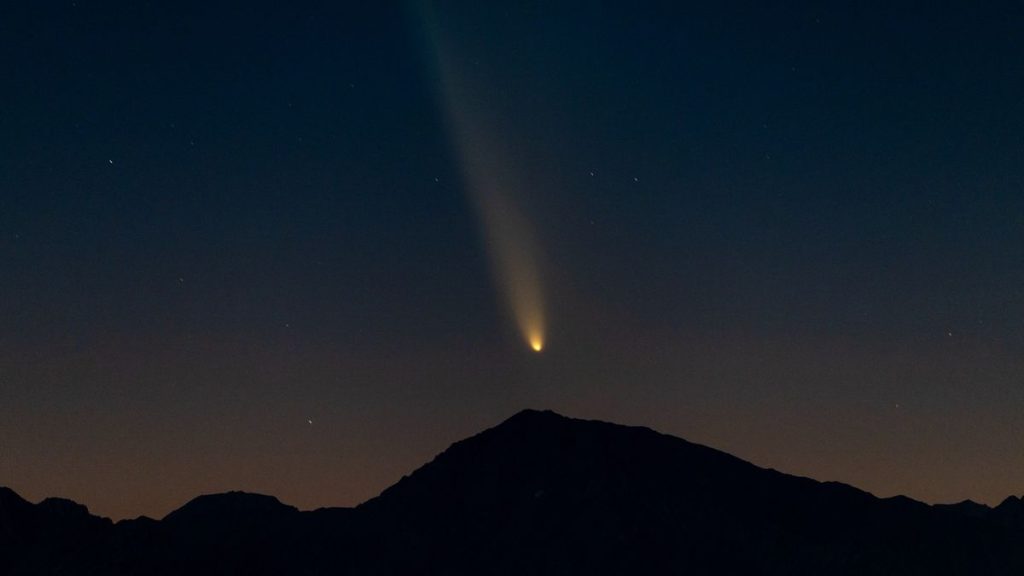
Update for Oct. 17: The Virtual Telescope Project’s livestream of the full Hunter’s Moon supermoon and comet Tsuchinshan-ATLAS was postponed due to poor weather. Another livestream of the comet will be available on Monday (Oct. 21).
Two spectacular night sky sights rise together next week, and you can watch them live.
October’s full Hunter’s Moon, the largest supermoon of 2024, will rise in the sky opposite the bright comet C/2023 A3 (Tsuchinshan-ATLAS). The moon officially became full today (Oct. 17) at 7:26 a.m. EDT (1126 GMT), but it will appear full to the naked eye all throughout the night. Once the sun sets tonight, the photogenic comet Tsuchinshan-ATLAS will shine brightly in the western sky.
Astronomer Gianluca Masi of the Virtual Telescope Project will be livestreaming telescope observations Comet Tsuchinshan-ATLAS beginning at 2 p.m. EDT (1800 GMT) on Monday (Oct. 21). Watch it live here courtesy of the Virtual Telescope Project or at the project’s YouTube channel.
The Hunter’s Moon of October 2024 will be the largest full moon of the year thanks to its proximity to Earth. The moon arrived at perigee, its closest point to Earth in its slightly elliptical, or oval-shaped orbit, on the evening of Wednesday (Oct. 16), coming within just 221,938 miles (357,174 kilometers) of our planet.
The result is that the Hunter’s Moon is what is colloquially known as a “supermoon,” meaning it appears roughly 14% larger than normal in the sky. Because the moment of full moon phase and perigee occurred within just hours, October’s supermoon will be the largest of 2024.
Tonight, the moon will rise in the east just as the sun sets. Because full moons occur when the moon and sun are opposite one another with Earth in the middle, full moons always rise in the east just as the sun sets in the west.
Joining the setting sun in the sky in the west will be comet C/2023 A3 (Tsuchinshan-ATLAS). The comet has been putting on quite a show for astrophotographers this year — even in space! The comet passed its closest point to Earth on Oct. 12 and is rising higher in the sky despite growing dimmer over the next week before fading from view with the naked eye.
If you’re looking to get a closer view of the full moon, comets or any other night sky objects, our best telescopes for beginners guide can help you find what you need. And if something more portable is your preference, check our our best binoculars guide.

